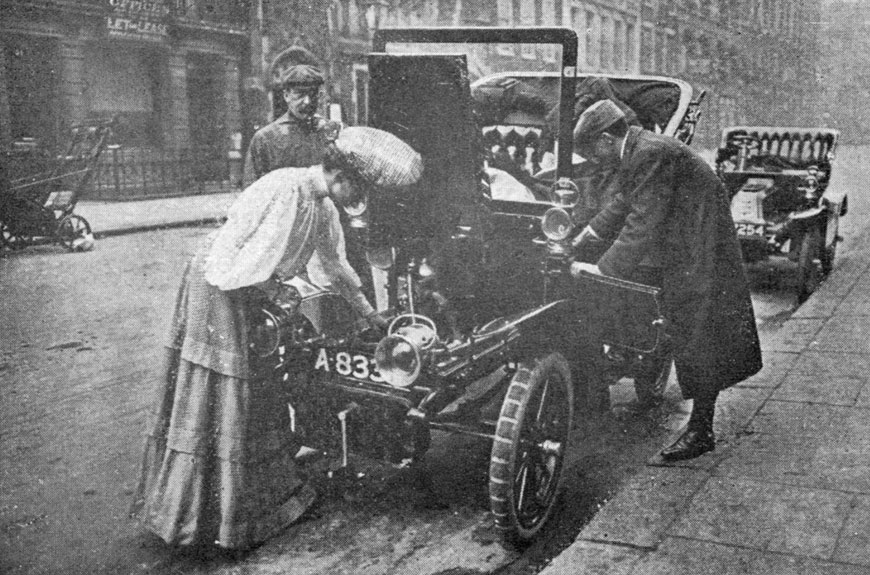Dorothy Levitt was the lady that was determined to enter the sport of racing. Levitt was from a wealthy London family and worked at the motor manufacturer Napier as a secretary. To her the contact with the racing driver was a thrill. Levitt met Selwyn Edge an Australian driver and the director of Napier and together they would reach a goal of the first woman race car driver. However it would take training and thinking to make the event occur
A six month apprenticeship to learn driving , chauffeuring and engineering. Drivers in 1903 needed to learn how drive their car as well as how it worked. Following the apprenticeship Levitt would make a living teaching the rich to drive. Perhaps the ladies that learned under Levitt's guidance were mystified when she became the first woman to compete in a race.
April 1903 Levitt would be the first English woman to compete in a race. While it was not a victory in the race it was one that may have changed many minds. Levitt herself only desired to "do better next time" and she would :
- In March 1905 Levitt would achieve the 'longest drive by a lady driver' by driving her car from London to Liverpool and back in 2 days time.
- In 1906 speed records with a flying run averaging 91 mph
- fastest girl on earth according to leading newspapers
- the darling of British motor racing
Sadly in 1910 she disappeared from the record and quit racing. In 1922 she passed away alone at the age of 40. Her records may have been beaten in years since but she had left a legacy of book about woman's right to motor. ‘The Woman and the Car: A Chatty Little Handbook for all Women who Motor or Who Want to Motor’. The book allowed women to see they too can be in the motoring world. It provided advice and pictures of her making repairs as well as other great advice. Perhaps the greatest and most important idea was that women should be treated equally in engineering based profession.
Dorothy Levitt proved that women were unsuited for driving was nonsense.
“If a woman wants to learn how to drive and to understand a motor-car, she can and will learn as quickly as a man. There are many women whose keen eyes can detect and whose deft fingers can remedy, a loose nut or a faulty electrical connection in half the time that a professional chauffeur would spend upon the work.”
retweet post here
shared on pinterest here
shared at these blog hops, linkups and parties
shared at these facebook group linkups





No comments:
Post a Comment
I love comments so if you have a minute leave me your thoughts on the above post